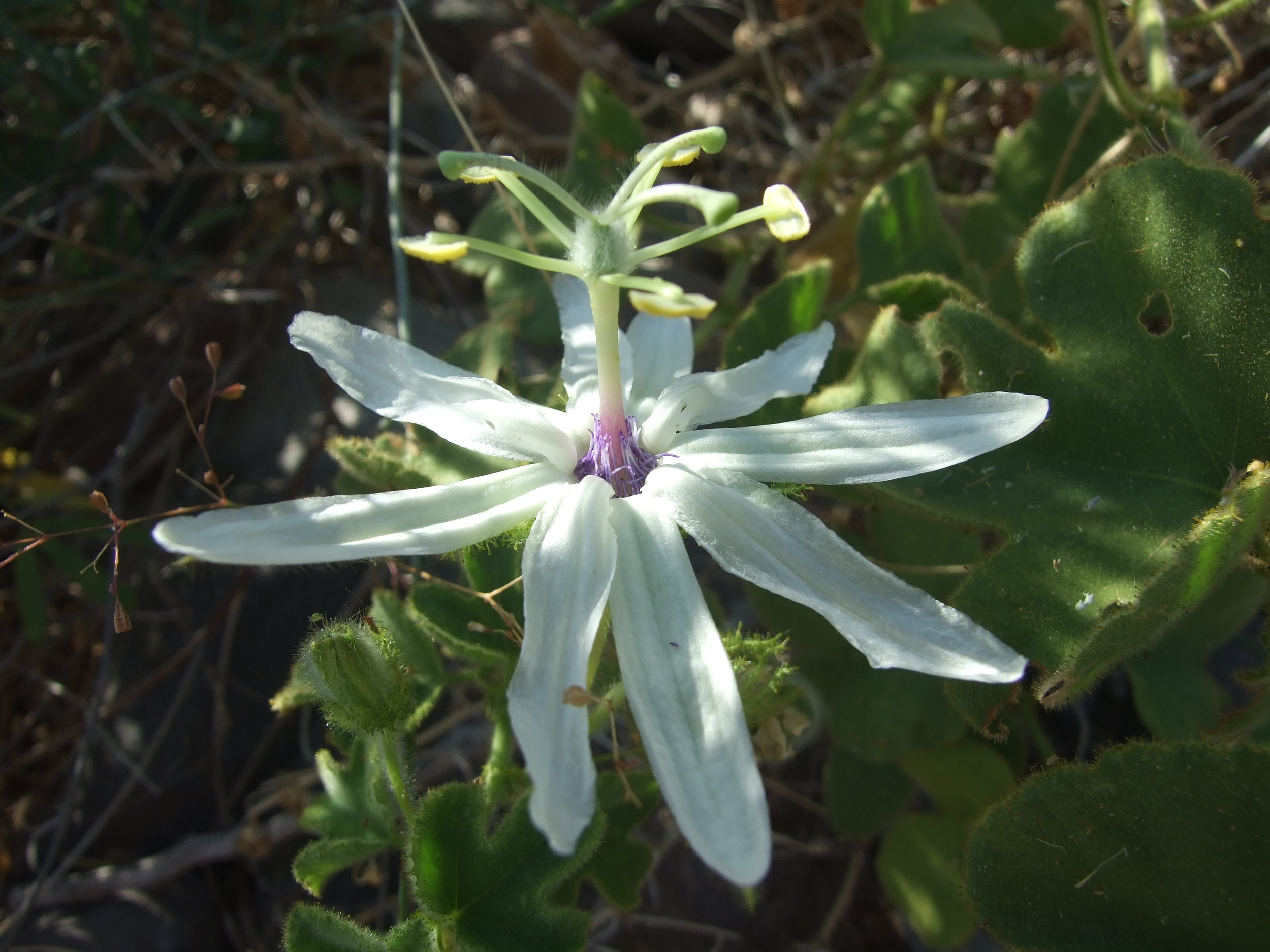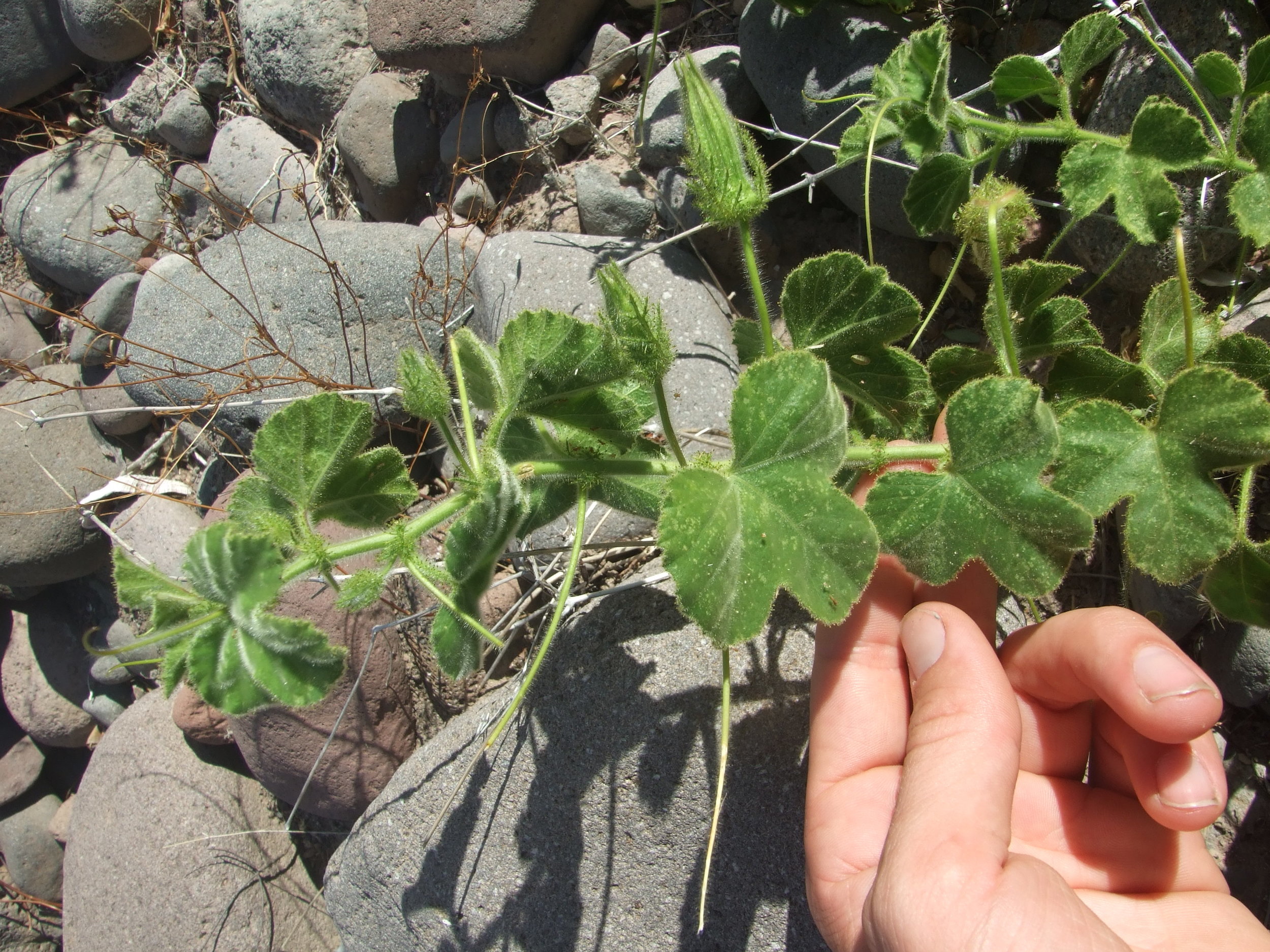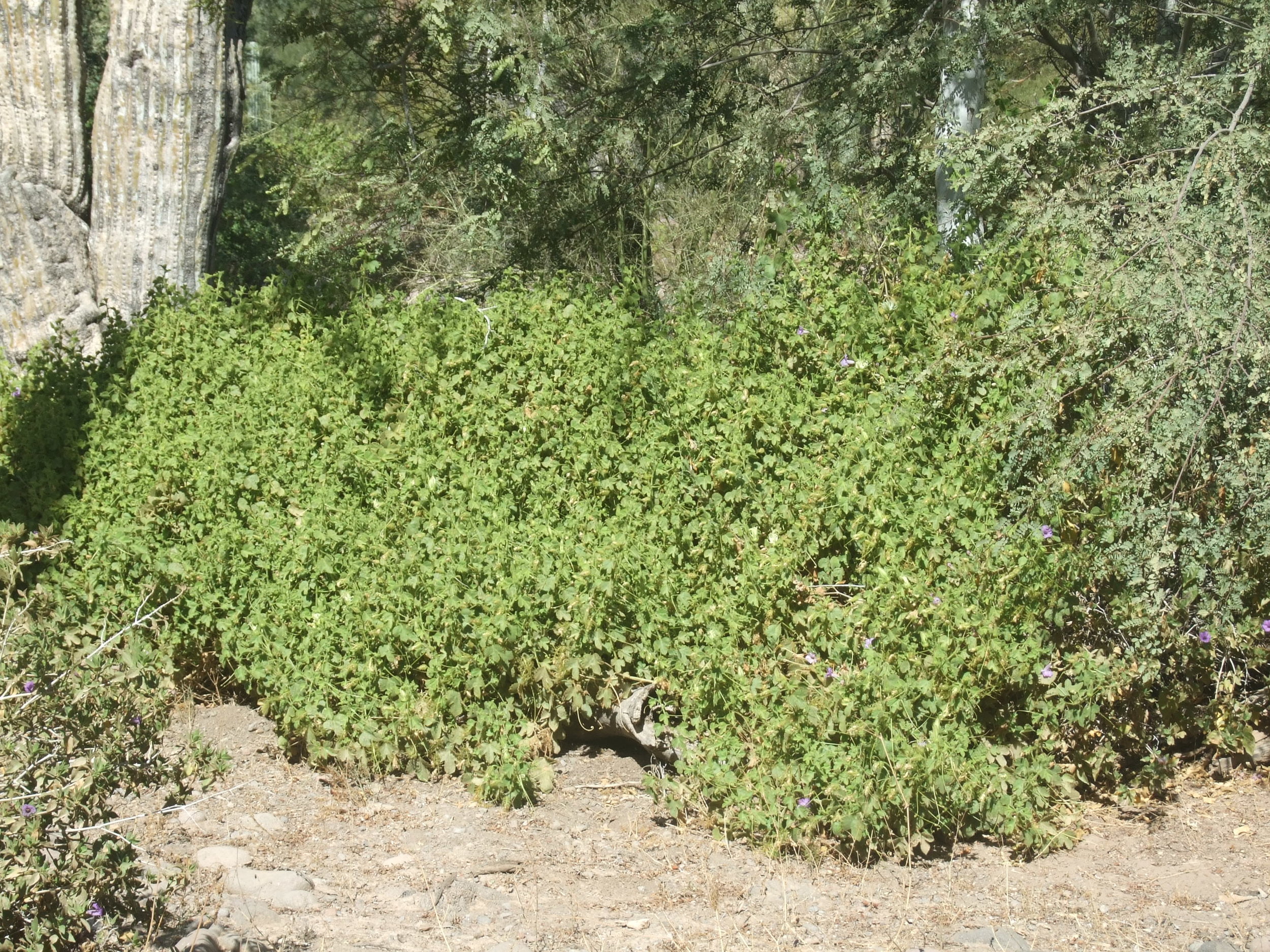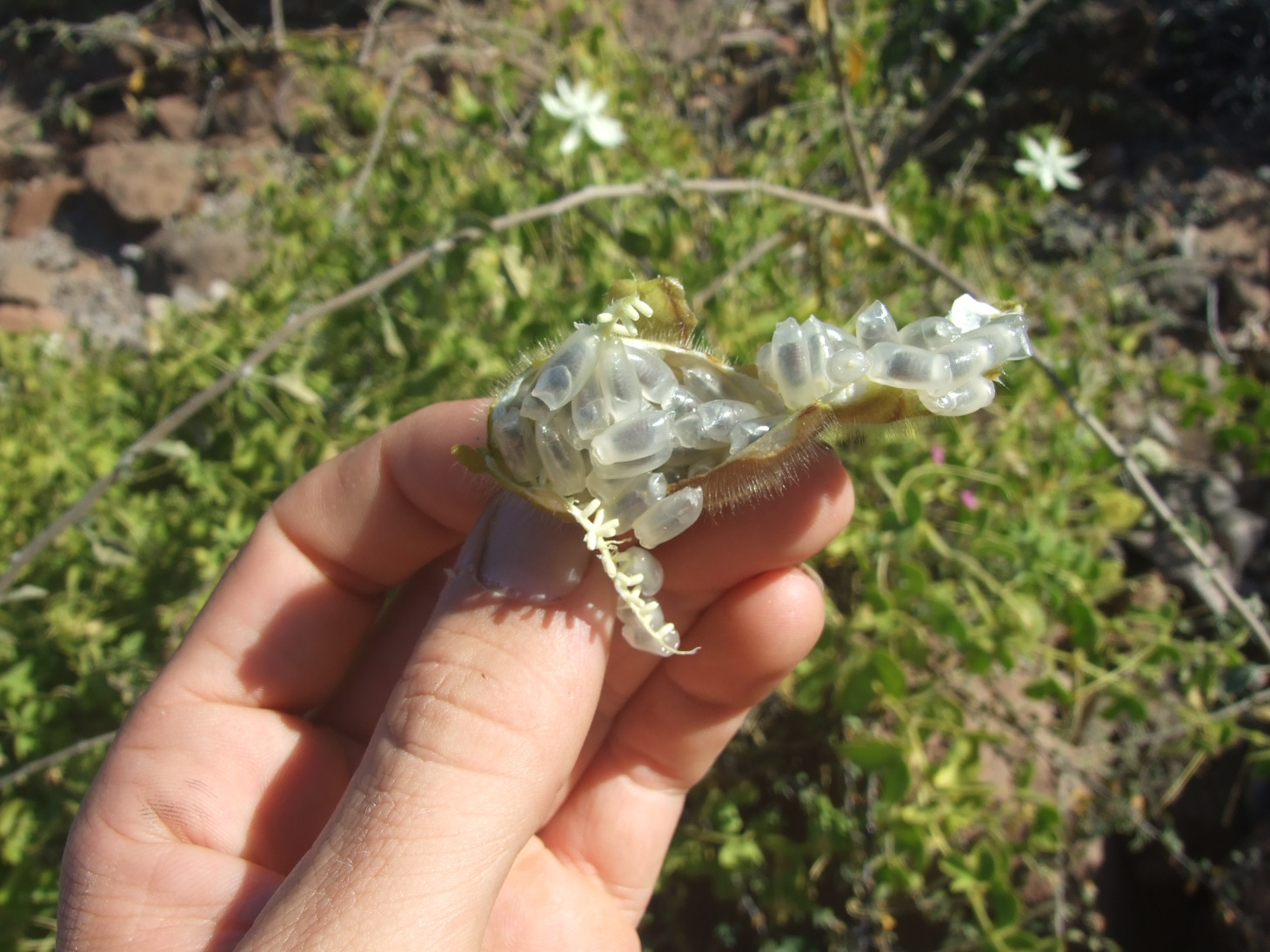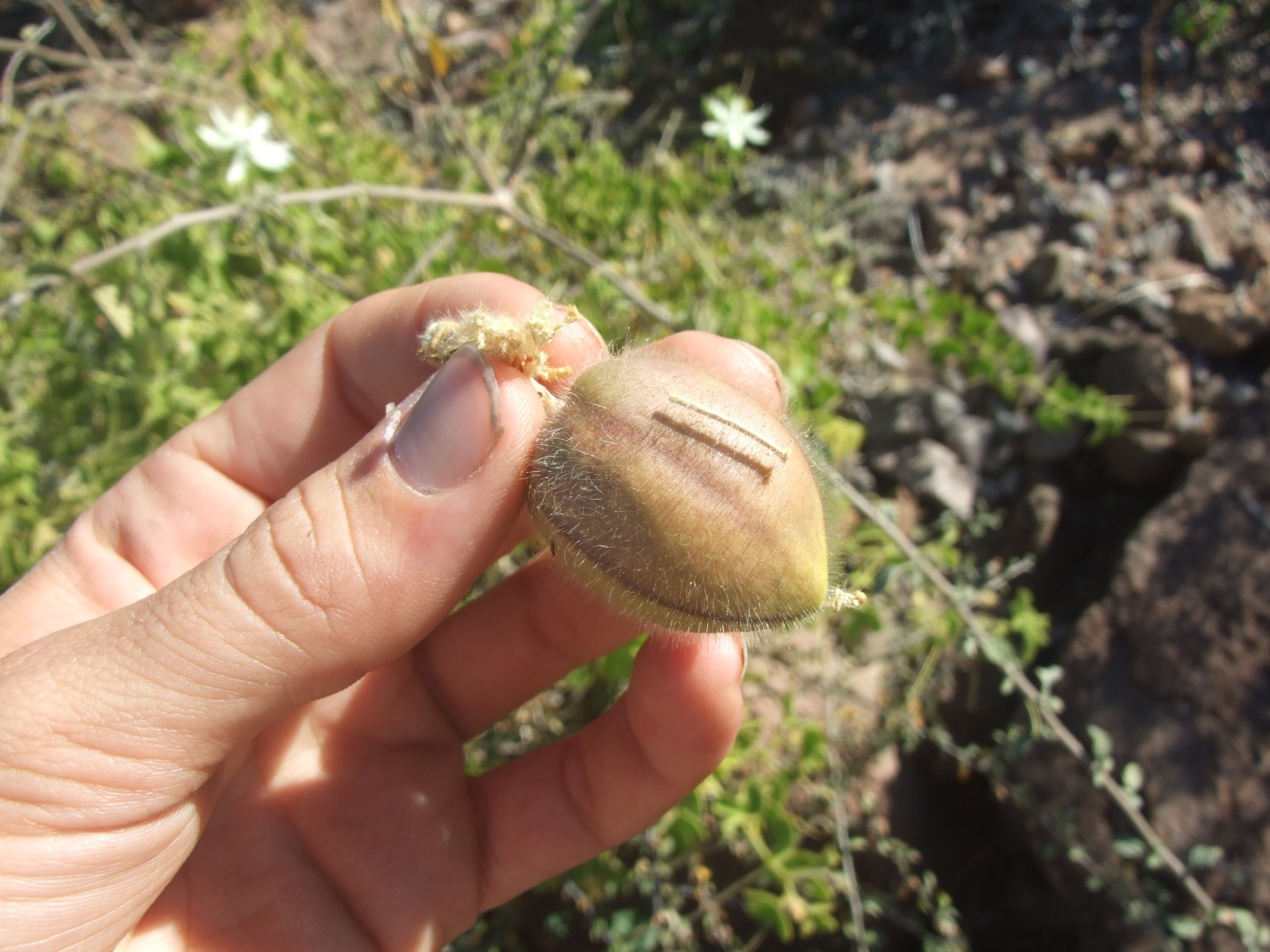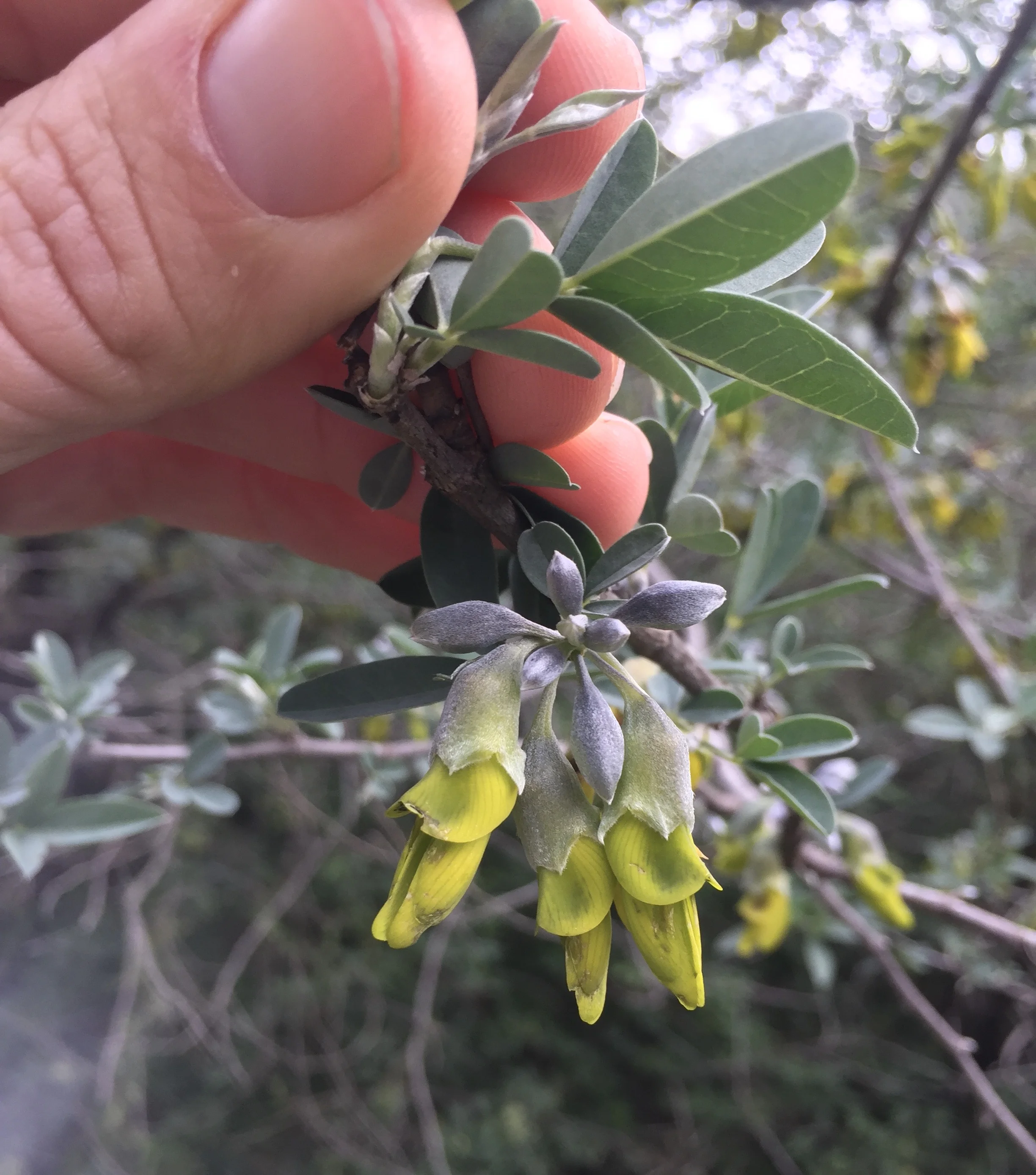Here are some photos of the desert native Passiflora palmeri, photographed in Baja Sur, Mexico.
Adansonia digitata - Baobab, Muyu (Chonyu), Mbuyu (Swahili, Digo), Muramba (Embu)
The Baobab appears to be a somewhat disproportional tree, with a massive trunk and gnarled, twisting branches.
The fruit grow to around 25 cm long, with a hard oval shell and longitudinal grooves, like a football. The pod is packed with seeds embedded in an edible cream or white pulp.
The cream can be eaten raw, or alternatively dissolved in water and stirred into a milky paste, served as a drink. Coconut juice is commonly added. The seeds can be sifted off and roasted like groundnuts.
In times of famine the soft tuber-like root tips are cooked and eaten. Germinating seed roots are also eaten, and young leaves are used as a vegetable, often mixed with cassava leaves.
The pulp covered seeds are coated with colored sugar and sold as sweets in coastal towns in Kenya (where the tree is most common).
A. digitata is also employed as a plant medicine. A decoction of the bark is used to steam-bath infants with high fever. A juice made from the mashed pulp is drunk to treat fever.
This versatile tree also yields a fiber (taken from the trunk) used as string for weaving baskets and ropes. Strings are first stripped from the trunk, chewed for softening, then woven.
Trees are traditionally used for placing bee hives, assumedly due to the high quality honey produced with the pollen of its flowers.
In parts of Kenya it is believed that the appearance of new leaf growth or flowers is an indicator that the rainy season is going to start. Fallen trees provide a huge amount of biomass and decompose over time improving the soil quality significantly.
Perhaps more then any other tree in east Africa, this one is associated with complex myths, legends, and beliefs amongst peoples in areas where it grows. For instance: Young plants are never cut down, while large trees are never debarked (for sap or fiber) just before the onset of rainy season for fear that to do so would keep rain from falling. The Baobab is considered to be a sacred and peaceful tree. A cut in the tree is said to bleed like a human being. And in the region of Meru, there is a belief that a person will turn into the opposite sex if they walk in a circle around the tree with a goat.
The tree is easily propagated from seed. For higher germination rates seeds can be scarified or put in boiling water briefly and let to cool. Naturally a seed can take several years to find water and germinate. The tree is very slow growing and should not be planted near houses as lateral roots can reach lengths of a hundred m or more. A tree is said to begin producing fruit after 60 years, so plant one now!
In Kenya there are three distinct varieties, differing mostly in the degree of sweetness of the pulp and size of the seed. The shape of the trees and fruit will also vary.
Anagyris foetida - an underutilized Mediterranean nitrogen-fixing shrub
Anagyris flowers and leaf.
Anagyris foetida is an ultra drought tolerant memeber of the Fabaceae family. The large shrub originates in the Mediterranean Basin. The plant illustrates one of the best drought resisting strategies of mediterranean flora: the plant keeps its leaves through autumn, winter and spring, then it goes completely deciduous in summer, becoming dormant and highly resistant to drought.
A. foetida can adapt to a wide variety of soils and has been used as a fast growing nitrogen fixing pioneer species in large-scale native restoration of fire damaged areas in Southern Europe.
I first took notice of this tree / shrub where I was living in Greece. Covered in relatively large yellow flowers in winter it stands out. The flowers then develop into relatively large pods full of hard bean / seeds. The leves remind me of Cajanus cajans, a tropical perennial edible bean producing shrub.
Anagyris foetida leaves and maturing seedpod.
in 2017 and 2018 I experimented with direct seeding of this species on a piece of land I am in the process of regenerating, planting Anagyris foetida at high densities as a guild / interplant among fruit and nut trees.
I believe this large shrub has significant potential as a nitrogen fixer in Mediterranean agrorofrestry, afforestation and reforestation systems.
Elaeagnus x ebbingei - Silverberry, Oleaster
BACKGROUND, ORIGIN AND DISTRIBUTION
Elaeagnus x ebbingei, commonly called oleaster or Ebbing's silverberry, is from temperate / subropical Areas of Asia. It is a cross between Elaeagnus macrophylla x Elaeagnus pungens. It is a large, bushy, rounded shrub that typically grows to 8-10' tall and as wide. Branchlets lack spines. Leaves are evergreen in warm winter climates, but semi-evergreen to deciduous near the northern edge of its growing range.
USES AND ETHNOBOTANY
The seeds can be eaten raw or cooked and are a good source of protein and fats. The fruit is edible, somewhat astringent until fully ripe (almost falling off), then very good and produced in large quantities. Fruits ripen in the middle of winter when few other fruit are available. Fruit will grow to be 3 cm long by 1 cm wide when ripe.
The fruit of all Elaeagnus species are a rich source of vitamins and minerals, especially vitamins A, C and E, flavinoids and other bio-active compounds. The fruit is also a good source of fatty acids, which is unusual for fruit.
Reportedly, current research indicates that consumption of the fruit greatly reduces the incidence of cancer in humans. Not only that but the compounds in the fruit are possibly capable of slowing or even reversing the growth of cancers that are already in the body.
Flowers are inconspicuous but emit a very agreeable aroma.
PROPAGATION, CULTIVATION AND USE IN SUSTAINABLE FOOD SYSTEMS
The plant is nitrogen fixing, meaning its roots have a symbiotic relationship with certain soil bacteria which form nodules on the roots of the plant and fix atmospheric nitrogen. Some of this nitrogen is used by the plant itself for its own growth, however some of the nitrogen is also available for plants growing nearby. Thus, planting E. ebbingei near other food crops can improve growth and increase productivity.
Due to the versatility of this plant, it has a wide range of uses for use in regenerative agriculture, permaculture, and agroforestry systems. It can grow in full sun or shade and can handle hot dry summers.
Elaeagnus can have a vine-like growth habit, especially when growing in the understory of a larger tree. Prune back annually to keep the plant contained as a dense hedge or shrub, the plant can take heavy pruning and produces abundant biomass.
Elaeagnus is very wind tolerant and can be utilized as a superior windbreak. It is also highly salt tolerant. It can be heavily pruned as a hedge or let to grow freely, reaching 5 m in height.
I have planted this species in temperate Europe and the Mediterranean Basin, as well as in California, its a tough shrub with with many diverse uses. I believe Elaeagnus ebbingei has major potential for use in sustainable agriculture systems and deserves further investigation, selection and development of superior fruit / seed varieties.
Bursera hindsiana (or epinnata) - Jatropha cuneata, Cercidium microphyllum, and Unidentified Shrub (forward right corner), Baja, Mexico
Two views of three small trees and a shrub. The trees are, starting from forward left hand corner in the photo directly below are: Matacora (Jatropha cuneata), Torote Prieto (Bursera hindsiana), and Palo Verde (Cercidium microphyllum).
Bromaliaceae, Ananas comosus, Pineapple, Pina
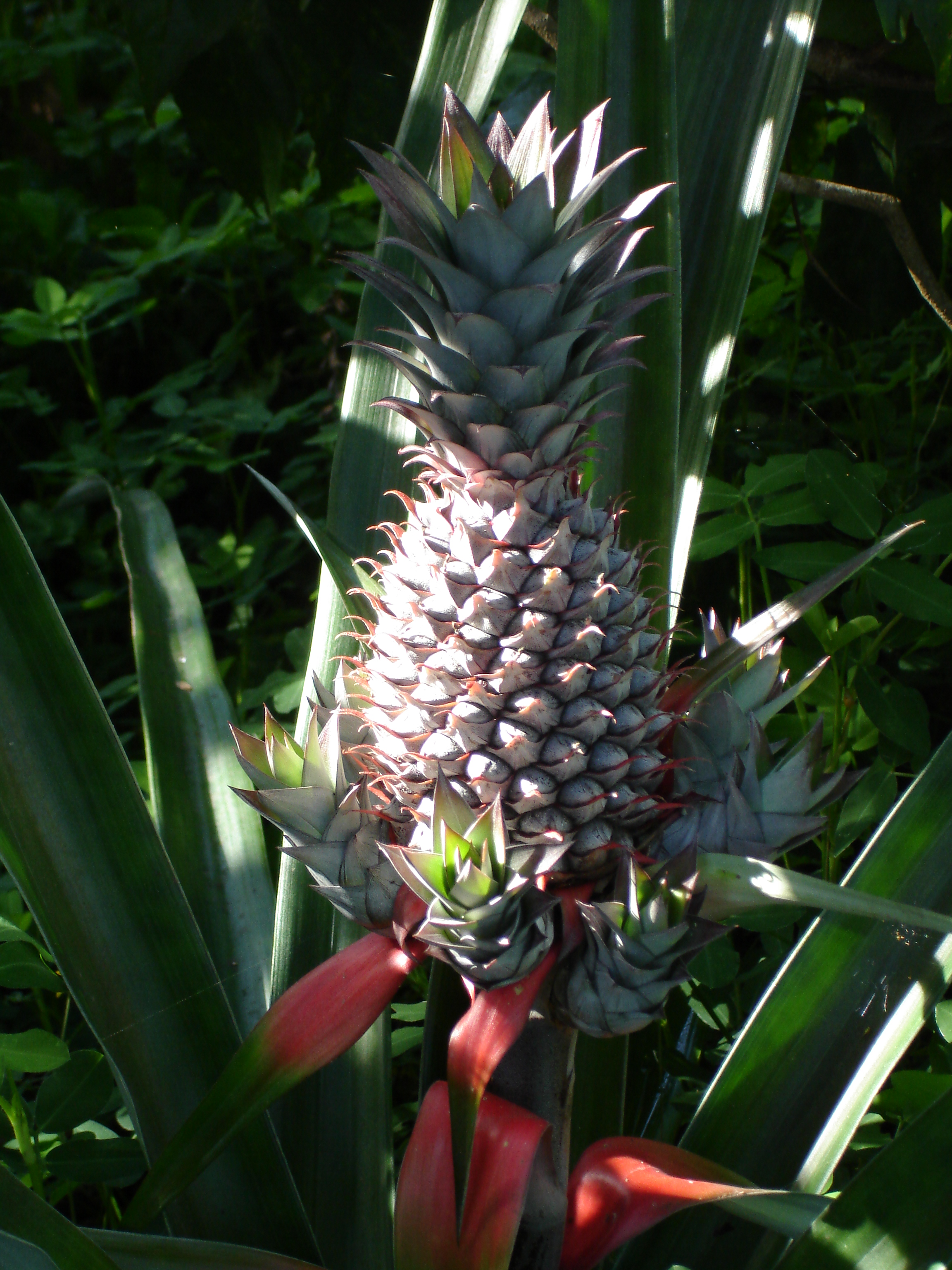 Pineapple is technically a perennial herb, native to the lowlands of northern South America. The pineapple has been cultivated thereabouts since pre-Colombian times. It first spread to Central America and was then introduced to the rest of the tropical world by the Portuguese and Spanish.
Pineapple is technically a perennial herb, native to the lowlands of northern South America. The pineapple has been cultivated thereabouts since pre-Colombian times. It first spread to Central America and was then introduced to the rest of the tropical world by the Portuguese and Spanish.
A dry, tropical climate is ideal for Pineapple production. The fruit is very drought-resistant but sensitive to frosts, therefore best grown in lowland regions near the sea. The pineapple has no seed and is propagated by the spiky crown that grows out the top of the fruit.
The fruit contains a mixture of protein-digesting enzymes that is used in treating inflammation and swelling (post-traumatic and post-operative oedemas). The strong leaf fibers are used in the textile industry. In Panama, indigenous populations use the fiber of an undomesticated, longer-leafed, native pineapple variety.
Pouteria campechiana - Eggfruit, Canistel
Canistel originates in Mexico and Central America where it has been cultivated since antiquity. It is now very common in Cuba and tropical America from Florida to Uruguay, it can also be found in the Philippines and Malaysia. The tree is typically managed between five and eight meters high. The fruit is five to ten centimeters long and round, or in the form of a egg with a point. The pulp is firm and almost powder, likened to the texture of a hardboiled egg yolk. It has a very rich flavor and texture. A fantastic fruit, in my opinion. I have heard that cheesecake made out of the fruit pulp is exceptional. Due to its almost powdery texture, the eggfruit is highly versatile and can be integrated into virtually any kind of blended drink or dish.
The fruit contains up to 40% carbohydrates, 2.5% protein, and is great source of Vitamins A, B3, and C.
Canistel is adaptable to a wide variety of soils and can be grown in both tropical and subtropical climates, as long as there is no freeze. It is very drought tolerant.
